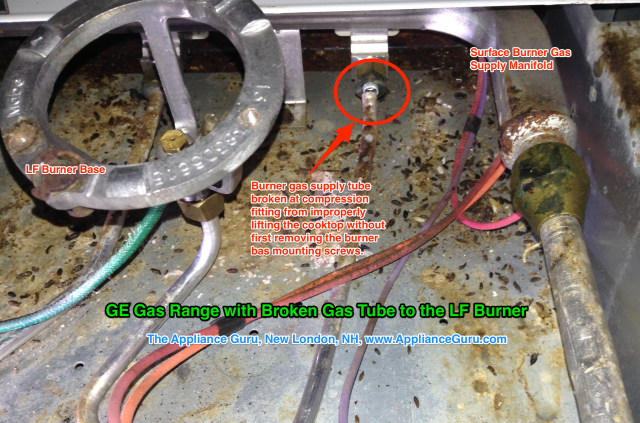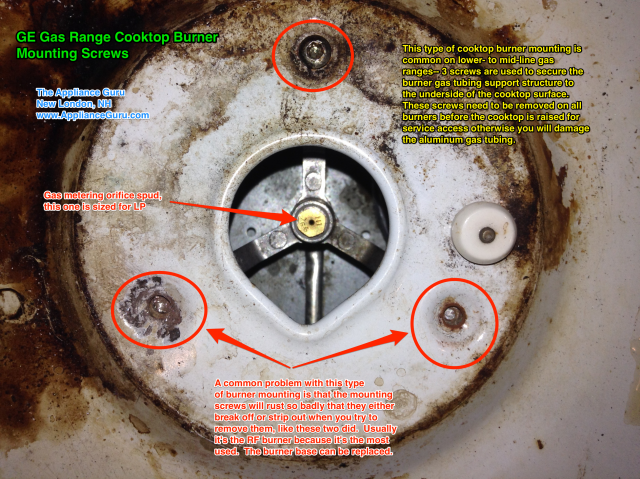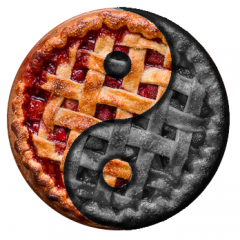Gas range goes BOOM! after a particular stove burner is lit
In this adventure into appliance dysfunction, the customer called me with a scary problem with her gas range. After she would fire up the left-front (LF) cooktop burner and it was on for less than a minute, a big flash-boom would erupt from underneath the burners. I reproduced the problem when I was there and it was a pretty impressive explosion! I wish I had gotten video of it but thought better of repeating it.
I knew I was dealing with a gas leak and had to get to the burner gas supply tubes to leak check them. I disassembled the range cooktop so I could get a look underneath the burners. Turns out this leak didn't even need gas bubble leak-check solution to find (click the pics for larger view):
That's the aluminum gas supply tubing for the LF burner. With a break like that, it's amazing that it was sending any gas at all to the burner. It was still supplying the burner with gas albeit at a reduced rate so the flames were more yellow than the other burners. The rest of the gas was flooding the compartment underneath the burners until it reached the Lower Explosive Limit (LEL) concentration for propane (which is 2.1% by volume, in case you were curious). Then the propane was in high enough concentration that it ignited from the open flame on the burner.
Range go BOOM!
Pants go brown.
So the next question is: How did this happen? Metal tubing that's not pressurized does not just spontaneously rupture.
Turns out the customer had been releasing the cooktop clips and lifting the top panel of the range without first unscrewing the burners. She would do this periodically to clean out the copious amounts of mouse poopy:
Every time she did this, however, she was flexing all the gas burner supply tubes which finally induced fatigue failure in the tube for the LF burner.
Why was the LF burner tube the first (and only, so far) to fail? Because it is the shortest tube. The other tubes, being longer, had more flex and were more forgiving.
So where are these mysterious burner screws that have to be removed? In this particular range (older GE), each burner has three mounting screws that need to be removed to release the burner base from the bottom of the cooktop panel. This way the tubing is not flexed when the cooktop is raised for cleaning or service.
What invariably happens with this design is that the mounting screws for the most-used burner (usually the RF burner for right-handed people) get rusted out like this:
Then either the head breaks off when you try to remove them or the head simply rounds out when you try to unscrew them. It's common to have to drill the screws out when this happens, which you can see in the photo above.
Moral of the story: Don't go messing with your appliances unless you know what you don't know! Just because you can undo some clips and take something apart doesn't mean you should, because there could be consequences that aren't even on your radar screen. Use the forums at The Appliantology Academy to get advice from the experts before you start mucking about with your appliances!
When dealing with gas appliances, don't assume anything: know what you don't know.
-
.png) 2
2










6 Comments
Recommended Comments